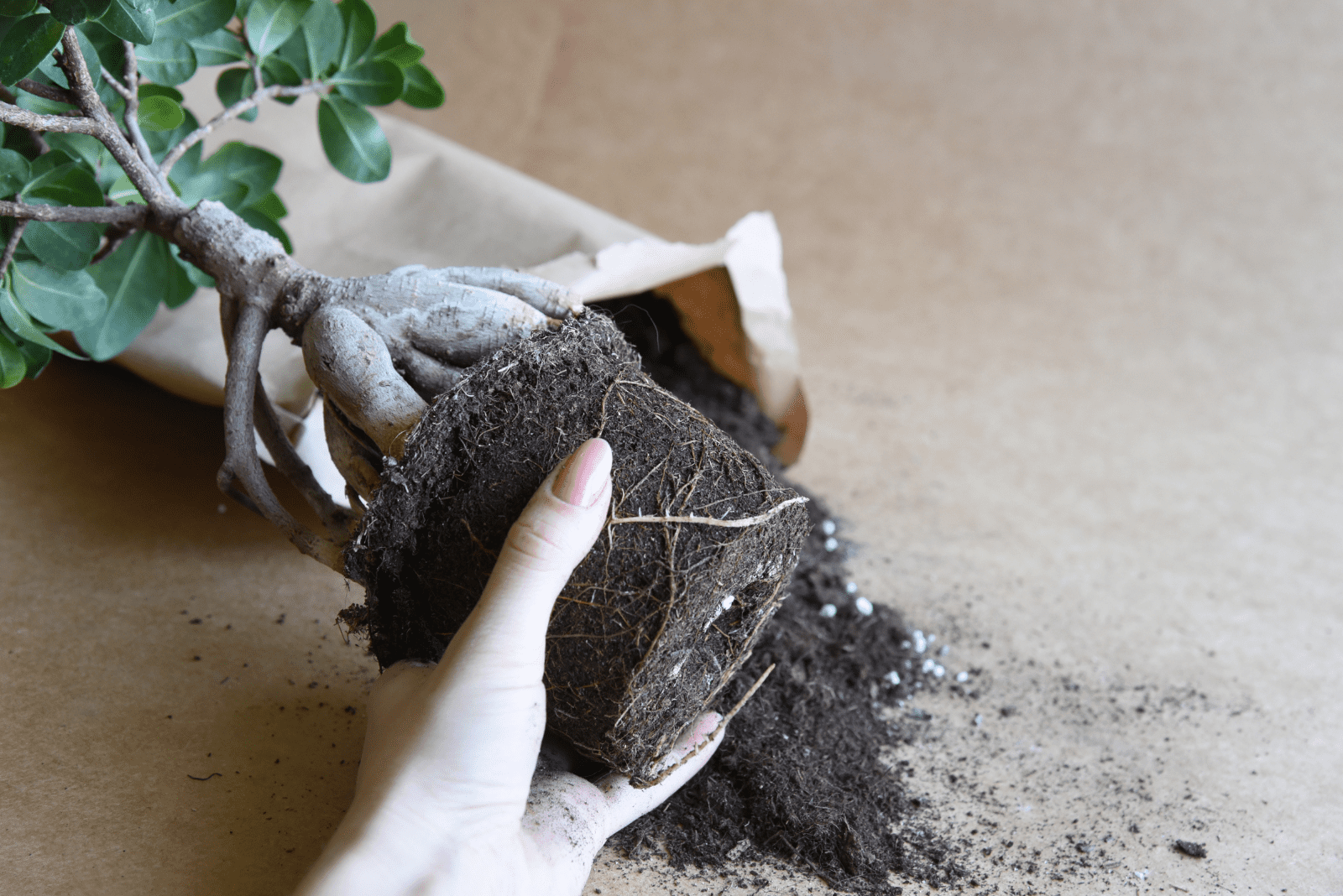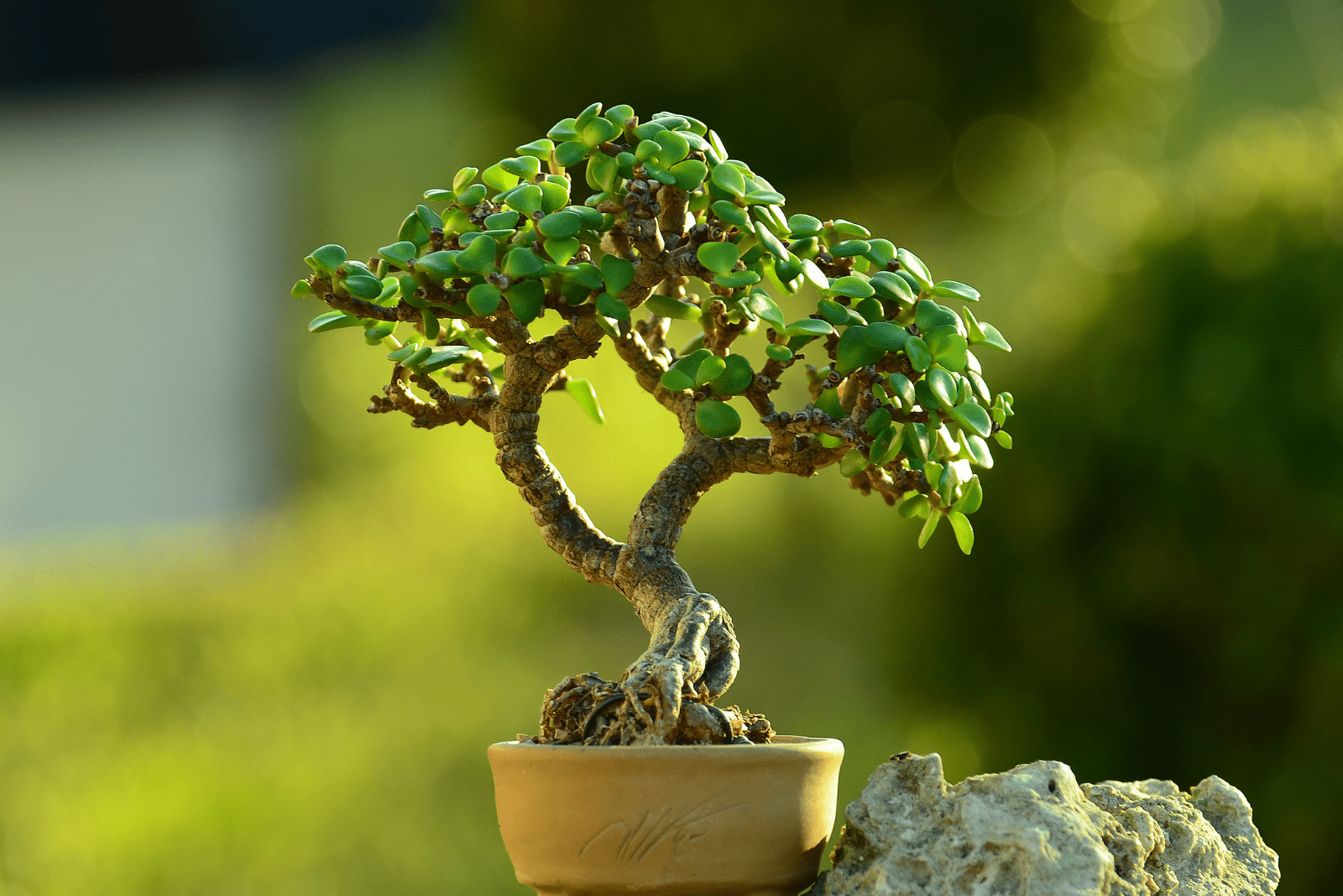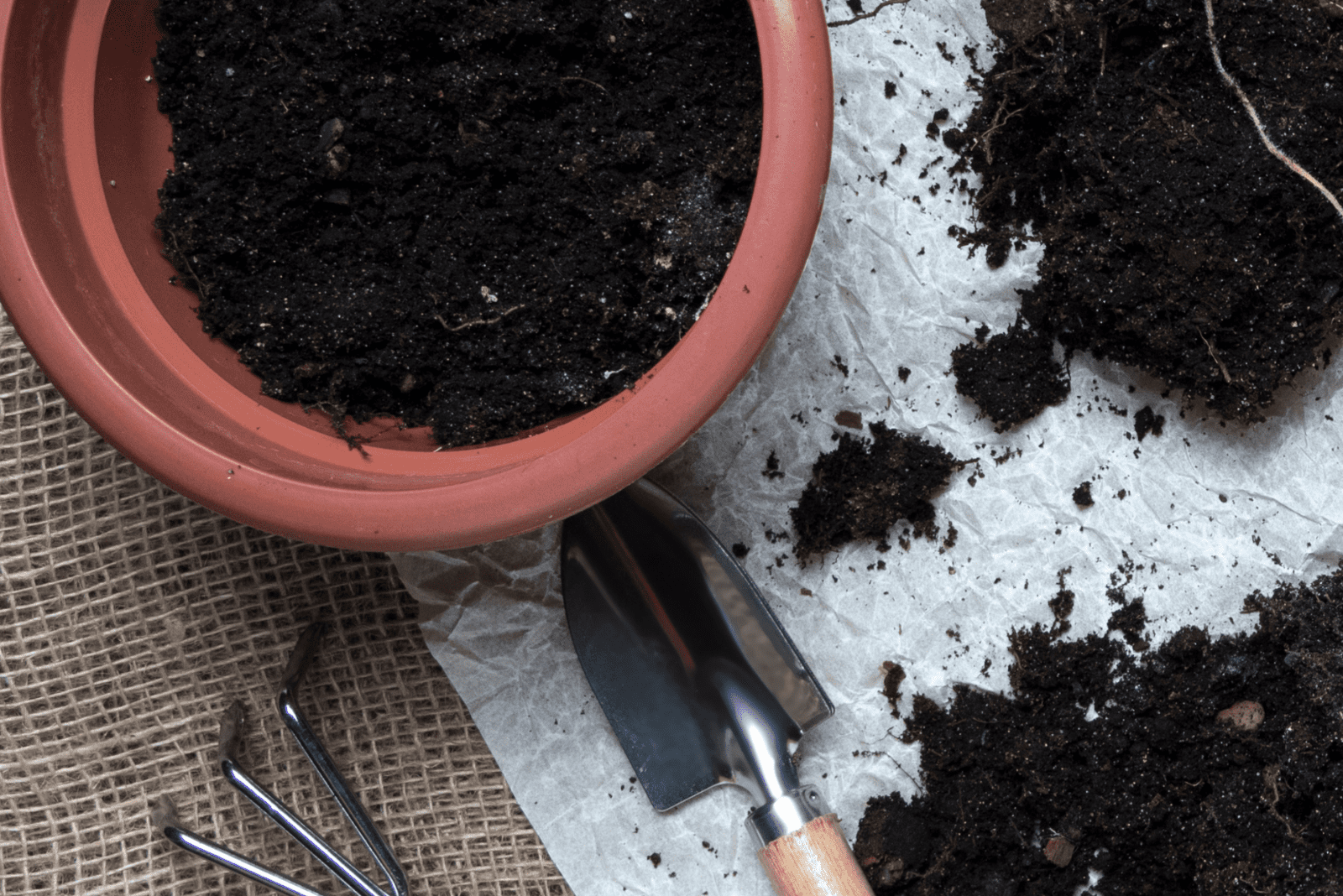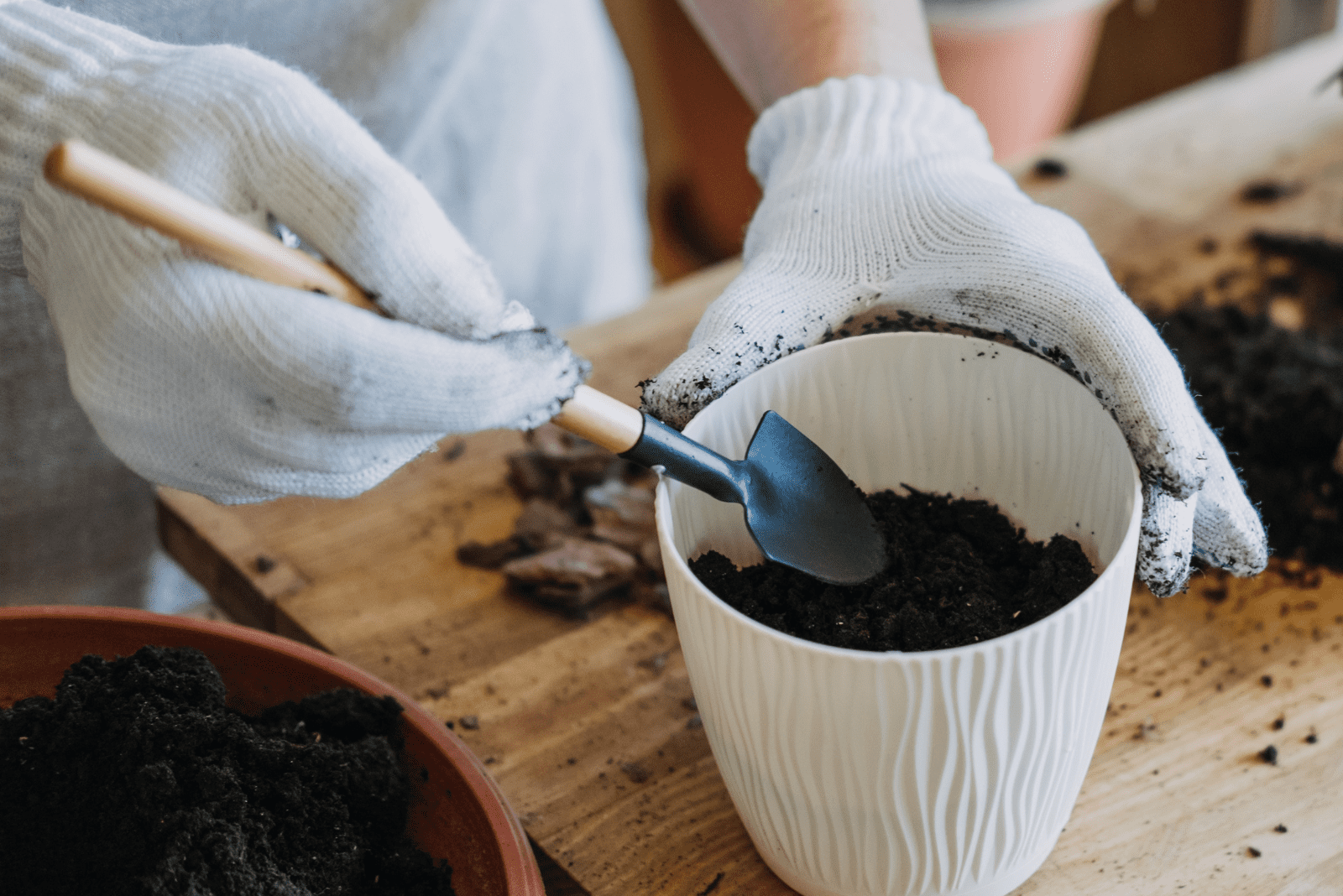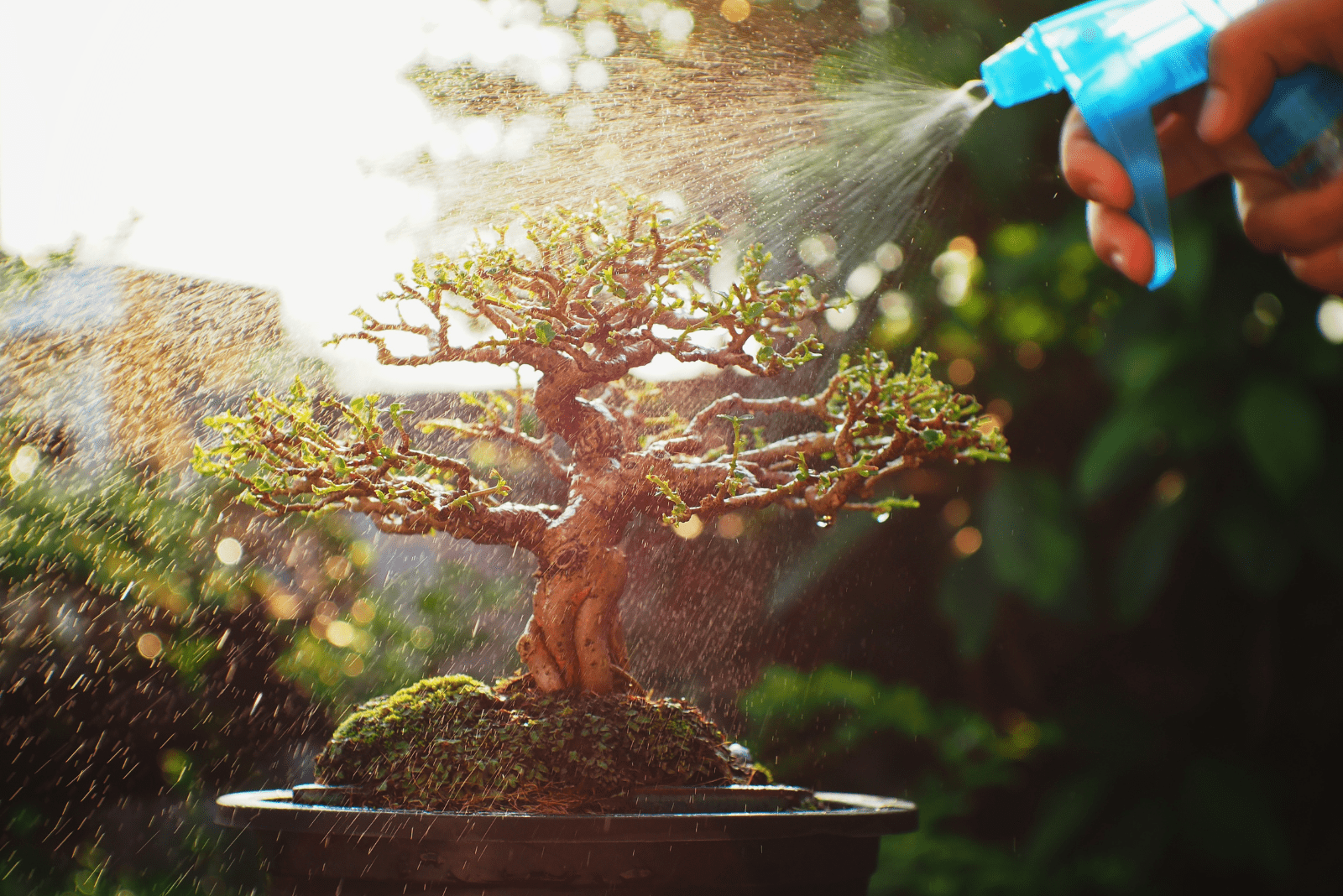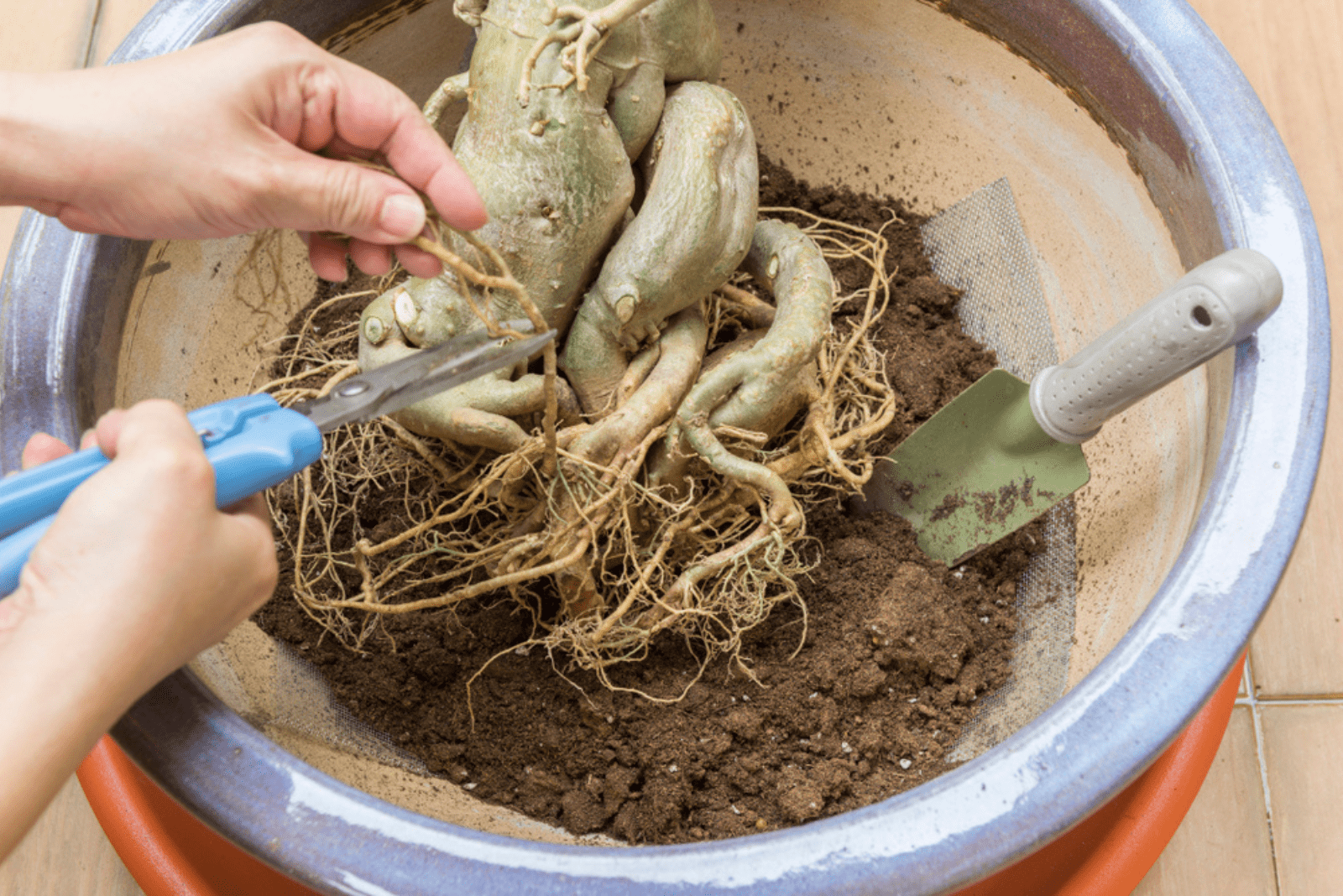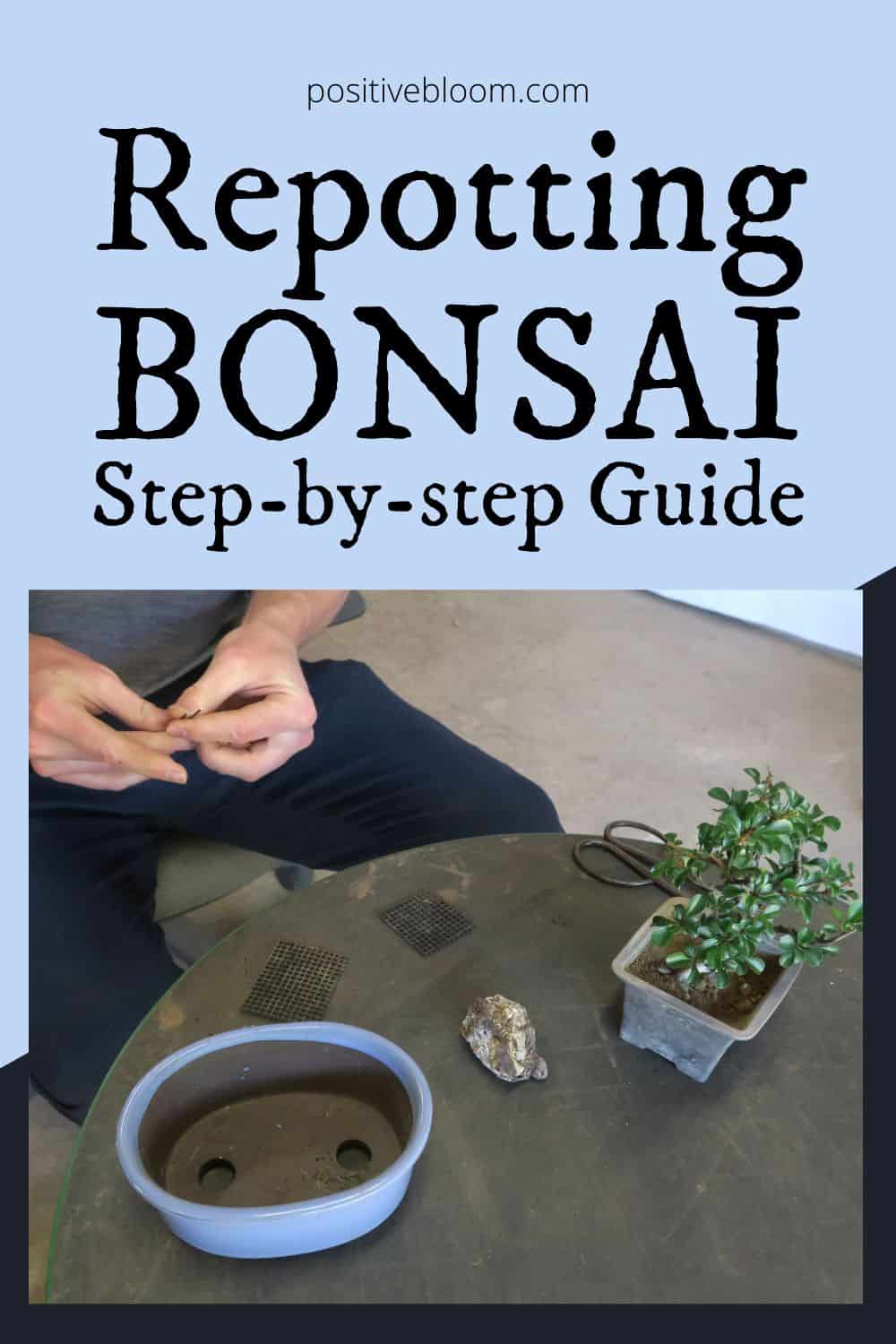Have you noticed that your Bonsai tree is looking kind of leggy and sad? Or is it not growing at all?
If so, then it is time for repotting!
Just like any other houseplant, the Bonsai tree grows in a container. After some time, its root system will grow and develop, filling all of the empty space in its container. If it stays in that same restricted space, then the plant might become rootbound, and that’s not good!
This prevents the Bonsai roots from functioning normally—the roots won’t be able to absorb nutrients and water properly, and there will be no airflow. Repotting is the only solution here.
Don’t worry; repotting a Bonsai tree is a piece of cake!
You won’t have any issues if you carefully follow our instructions, so now, onto the repotting guide!
Repotting Bonsai: How To Know When To Repot
If your plant is not feeling comfortable, it will find a way to tell you. There will be some obvious tell-tale signs that your plant needs more space!
Your plant’s growth will slow or be completely stunted, there will be no flower production, no new leaves, and the old ones might start yellowing!
Therefore, putting them in a new pot that is slightly larger than the previous one can make a lot of difference. But don’t expect them to start growing rapidly, Bonsai trees are usually slow growers—they like to take their time to produce those thick branches and lush green leaves.
These are the signs that your Bonsai tree needs repotting:
• stunted growth
• soil does not absorb water
• compact soil
• plant looks leggy
• underwatering
• yellow foliage
• malformed leaves (curling)
• leaves are not as glossy
• roots coming out of drainage holes
• root ball is rising in the pot
When Should I Repot A Bonsai Tree?
The perfect time to repot a Bonsai tree is in the period before the growing season starts—this is when the tree is still in dormancy, and it begins to “wake up”, that is, its buds begin to open. The tree is not yet supporting full-grown foliage, therefore, repotting won’t have as much of a negative impact as it would during the growing season.
When you are repotting, you will have to prune off any mushy and damaged roots. If your plant is root bound, then it will have some roots that are not functioning properly, and they have to be trimmed off.
The reason why we tend to avoid repotting during dormancy is that the roots will stay open and unhealed, which makes the plant even more susceptible to root rot and other diseases.
However, during the growing season, the roots have enough time to recover and adapt to their new environment.
So, we can conclude that late winter or early spring is the best time of year to repot a Bonsai tree. The majority of Bonsai trees are successfully repotted in mid-February, though you can choose whenever in the early spring or late winter—just avoid repotting in the middle of winter or summer!
How Often To Repot A Bonsai Tree
As we have already mentioned, Bonsai trees are not fast-growers. Sure, there are some varieties that will grow faster than others, but they are, overall, relatively slow-growing trees.
For instance, if you want to grow a Bonsai tree from seeds, you will have to wait about 10 to 15 years until it is firmly established. Don’t be surprised if the plant doesn’t even look like a Bonsai in the first five years.
Generally speaking, a Bonsai tree should be repotted every 3 to 5 years. Of course, this does not apply to some fast-growing varieties, such as the Juniper Bonsai or the Japanese Maple Tree.
Lemon cypress bonsai, for example, needs repotting every 2 years when it’s still young.
I suggest that you regularly check for any signs that it needs repotting—you should not repot your plant and expose it to unnecessary transplant stress if the plant still has enough space for growth and development.
Read also: How Long Does It Take For Bonsai Trees To Grow? Find Out Here
Materials Required For Repotting A Bonsai
Now that we have determined when to repot the tree, let’s find out what materials are needed for repotting. We should come prepared, right?
Here is what you will need:
• new pot
• repotting tools (root rake or root hook, pliers, pruning shears, chopstick, wire cutters, and a mesh)
• new soil (suitable for a Bonsai tree)
These are all of the materials that you will need for successful repotting!
I suggest that you check out our suggestions for a soil type for Bonsai, because the soil affects the tree’s health the most. Therefore, good soil = a happy tree!
The Perfect Bonsai Soil Mix
Let’s start by saying that regular potting soil does not work well for Bonsai trees. These beautiful Japanese houseplants need soil that is well-draining—it needs to be able to retain just enough moisture to hydrate the plant and, at the same time, drain the excess moisture to prevent root rot.
The perfect soil for Bonsai tree species consists of akadama clay, lava rocks, and pumice in a ratio of 1:1:1. If you are a busy bee that sometimes forgets to water plants, then I suggest that you add more akadama for water retention.
If the humidity levels are high, then you should add more lava rocks to the soil as the plant can absorb the moisture from the air—lava rocks will improve the drainage.
There are some other soil additives that can be added. For instance, you can add mycorrhizal seeding products or humate products.
Mycorrhizal seeding products can improve the Mycorrhizal fungi population in the soil. These fungi keep the tree healthy and alive by creating a symbiotic relationship with it. They help to transfer the nutrients to the Bonsai tree’s root in exchange for some sweet sugar!
Humate products contain humic acid—this is the main ingredient of humic substances, which are dark brown and key constituents of soil organic matter, humus, that adds to the chemical and physical quality. Humic acid is a good chelator for positively charged ions—this allows the plant to absorb these ions and prevents them from seeping out of the soil. Ultimately, this leads to better nutrient absorption.
Use The Right Pot
The main reason for repotting the tree is that it has outgrown its current pot. Now, they don’t need another small pot to squeeze into!
As a general rule, when repotting any type of plant, you should find a pot that is slightly larger than the current one—gardeners usually go with 2 inches bigger.
First and foremost, you have to take into consideration the drainage. Even though the Bonsai soil might be well-draining, drainage holes at the bottom of the pot are crucial for removing excess water as well.
In addition to this, you will have to buy a pot that has wiring holes, so that the Bonsai plant can be fixed at the bottom.
When it comes to the pot’s material, I suggest that you buy a porcelain or ceramic pot, it is also important that they are stoneware burned—this means that it will not absorb or hold water in the material. This can help to maintain a healthy Bonsai tree.
The design of the pot is totally up to you!
There are unique pots specifically designed for these Deciduous trees—some pots blend so well with the tree that it even looks like they are one special art piece.
A Step-by-step Guide For Repotting Bonsai
Bonsai trees are a type of Conifers tree that have much slower root growth when compared to other species. Even though the tree takes its sweet time when growing, you will have to repot it after a few years.
Don’t worry; repotting trees is not as scary as it sounds—it is quite similar to repotting regular plants, though you might need some help if the tree has grown quite big.
I also recommend that you do this out of direct sunlight, because it might damage those delicate Bonsai tree roots, and don’t water the plant a few days before repotting because it is a lot easier to deal with dry soil.
Now, let’s dive into our step-by-step guide for repotting this unique-looking tree.
1. Prepare The Material
When you are about to repot any type of plant or a tree, it’s best to prepare the material first, so you don’t have to run around your house and sheds looking for a root hook and letting your plant’s roots dry out.
We have already listed the material needed for the repotting process, though I would strongly advise you not to use the old soil but rather buy or make a fresh potting mix. This is because the old one might be contaminated with various bacteria or fungi, and it is low in nutrients as well.
Never put your plant in the same pot if you notice that the roots have started coming out of the drainage holes—this means that the plant has outgrown its current pot and that it needs more space for new roots!
2. Take The Tree Out Of The Pot
First, you will have to use wire cutters and cut the wires at the bottom of the pot—that is, if the tree has been anchored to the pot. After this, use a root rake to break down the soil so that it is easier to take the tree out.
Now, you can do this by hand, but I often recommend using a root hook to remove the tree from the pot. Here, you will remove the excess soil from the roots by using a root rake or chopsticks—it’s totally up to you!
Please be careful when doing so because you might damage the roots and prevent new growth.
It’s important to leave half of the root mass untouched. This is because it contains the necessary bacteria and fungi for survival, so if you get rid of those, you might as well say goodbye to your Bonsai tree.
The most significant fungi are Mycorrhizal fungi, which are in a symbiotic relationship with the tree, and they help with the uptake of nutrients and water.
3. Root Pruning
After you have carefully untangled and examined the root system, you should sterilize your pruning shears and go straight into trimming the roots off. However, you shouldn’t cut just every root that gets in the way!
Pick the roots that have started rotting and decaying and those that are already dead. You should also cut the roots that are too long, but never cut more than 30% of all roots—especially if you are planning to put the plant back into the old pot (that is, if it has not outgrown its current pot).
In this case, make sure that the drainage holes are covered with mesh.
You probably think that cutting this many roots could be damaging to the plant—well, the answer is yes and no. There are biological processes in the plant that require root pruning.
For instance, transpiration is a process through which the plant’s roots absorb nutrients and water and then transport them to the top of the plant. This process can be considered reverse photosynthesis.
The small root hairs at the ends of the roots absorb almost all of the water that a root system takes in. The thick, large roots can usually be removed because they are useless.
The root system and photosynthesis should be balanced—if the Bonsai tree has fewer leaves, then it needs a smaller root system that photosynthesis can support.
4. Put The Tree In The New Pot
I hope that you have read our section about the pot and that you have already bought a new pot that is perfect for your Bonsai tree!
First, you will cover the base of the pot with some heavy grain soil like grit, lava rocks, or Akadema—this will serve as a drainage layer, though some gardeners put compost on the bottom to improve growth (I usually avoid this).
However, you should add some soil so that the Bonsai roots are not in direct contact with the gravel, mainly because it can get extremely hot in a matter of minutes if you keep the plant in direct sun during the summer.
Then, you will have to be careful about the positioning. Asymmetrical Bonsai trees are usually put off-center—make sure that the best side of the tree is facing the correct direction in the pot.
After you have successfully positioned the plant, you should fill out the rest of the pot with the same soil (hopefully, you are using the one we have suggested). You can use chopsticks to fill out the air pockets around the roots.
Gravel or sand can be added to the soil’s surface for decoration, though I think that the soil gives more tropical vibes to it!
5. Water Thoroughly
When it comes to aftercare, the most important thing is to water your repotted Bonsai tree thoroughly. This will help the soil to settle and make your plant comfortable.
Continue watering deeply for a few weeks, then continue with regular plant care. If you are not familiar with Bonsai tree plant care, keep on reading!
Brief Bonsai Tree Plant Care
These evergreen trees are a bit needy compared to other houseplants. In fact, their detailed plant care depends on the variety of the Bonsai tree. There are also some differences when growing indoor and outdoor Bonsai trees.
However, these simple requirements are almost the same for all trees, so let’s dive in!
Water And Temperature Requirements
A temperature range of 65 degrees Fahrenheit to 75 degrees Fahrenheit is necessary for Bonsais. At night, it should be between 55 degrees Fahrenheit and 60 degrees Fahrenheit.
Throughout the winter, the temperature should be maintained between 50 degrees Fahrenheit and 70 degrees Fahrenheit.
The Bonsai roots are affected by varying temperatures. You need to prevent them from becoming too cold or dry during the winter.
Most Bonsai plants are composed of at least 55% water. Additionally, the leaves of the tree are at least 75% water, so we can conclude that the Bonsai tree loves moisture!
Therefore, you should keep the soil moist if you want to make your Bonsai tree happy.
To find out when to water your tree, stick your finger in the soil, about one to two inches deep. If the soil is dry, then go ahead and water the plant. If not, postpone watering for a few days.
Humidity And Light Requirements
If you were wondering how much light Bonsai trees need, the answer is the same—most Bonsai trees need about 5 to 7 hours of daily sunlight throughout the day, though this can vary between species.
If you are growing an outdoor Bonsai tree, then light conditions shouldn’t be an issue. However, if you do bring your tree indoors during the winter season, make sure that you place it somewhere where it can get plenty of bright light!
As for humidity requirements, these plants like humid environments; therefore, you should invest in a humidifier (you can find ones cheap on Amazon) or create a pebble tray that will evaporate moisture for your plant.
Read also: Do Pebble Trays Work For Humidity? All The Answers
Fertilizer Requirements
You must be aware that for plants to be strong and successful, nutrients are necessary. Bonsais don’t have enough room to receive oxygen and nutrients because of the constrained root structure. As a result, you will need to fertilize your Bonsai because it needs more nourishment.
Regular fertilization will stop your Bonsai from developing thin branches and maintaining a small size.
Gardeners can determine the best brand for their tree and understand the nutritional composition by using the NPK value of high-quality bonsai fertilizers.
Due to the constrained space in its container, a bonsai plant will need a lot of fertilizer during its growing season. If you want to understand how to use fertilizer to make a bonsai tree grow more quickly, you must regularly feed your Bonsai.
During the growing season, be prepared to feed your Bonsai once a week.
I recommend that you use a fertilizer with NPK formula, though the best are the ones that contain high Nitrogen levels. So, you should look for ones with a 10:6:6 ratio.
If you are interested in knowing more, please check out this video regarding the fertilization of Bonsai trees:
Pruning
To keep Bonsai trees tiny and compact, they must be pruned frequently. The two most common types of pruning are structural pruning and maintenance pruning.
You should regularly prune the buds and branches of your tree to give it the shape you want.
Thicken The Trunk
Bonsai trees need a solid core to support their thick leaves and branches.
The fact that this core transfers nutrients and water throughout the system and absorbs carbon from the tree’s foliage, makes it essential for the tree’s overall health.
Different trunk development processes must be followed. However, these are not recommended for beginner gardeners.
Splitting
To keep your Bonsai from reconnecting as it grows, just cut it down the middle and attach wires to either side of it.
When used properly, this strategy produces results straight away and requires less space as there are now two small trees instead of one big one.
Your Bonsai will grow more quickly if it has a robust trunk.
Merging
This approach includes using numerous saplings tied together, which will eventually grow into one plant in place of an existing Bonsai tree.
This remarkable process can be completed in just a few months when fast-growing trees, like pine or spruce, are linked.
Frequently Asked Questions
1. How do beginners repot a Bonsai?
A Bonsai tree can sometimes be complicated to repot, especially for beginner gardeners that have just started their gardening journey. First of all, you must prepare the necessary material before repotting.
This includes buying a new pot (if the tree has outgrown its current one), gathering the necessary gardening tools (pruning shears, root hook, root rake, chopsticks, wire cutters, and a mesh), and also creating a perfect Bonsai soil mix (akadama, lava rocks, and pumice).
Use a root rake to remove the soil, and carefully remove the plant out of the pot with a root hook. Clean the excess soil with chopsticks or a root rake, then carefully examine the root system. Check to see if there are any damaged roots that need to be trimmed off. You should also cut any roots that are too long.
Put a layer of gravel in the new pot, and, on top of that, spread a layer of soil so that the roots are not in direct contact with the gravel. Carefully place the plant in the pot and fill out the pot with the same soil. Water thoroughly afterward.
2. What kind of soil do you use for a Bonsai?
Bonsai trees need proper drainage. This means that you will have to provide them with well-draining soil that is still able to retain some moisture. The perfect soil for Bonsai tree species consists of akadama clay, lava rocks, and pumice in a ratio of 1:1:1.
Add more akadama if you tend to forget about watering, or add more lava rocks if the humidity is high. You can also add some soil additives, like humate or mycorrhizal seeding products.
3. How do I make my Bonsai tree grow faster?
Giving your Bonsai tree the right care will help it grow much faster, so be sure to place it in well-draining soil, water it frequently, and provide it with enough light.
Although pruning should also be done periodically, since the roots will continue to grow and expand in a quest for more food, repotting and fertilizing are also essential because they provide your plant with extra nutrients.
Last but not least, you can always choose to cultivate a Bonsai species that grows quickly!
To Sum Up
Even though repotting a Bonsai might seem complicated, I am sure that you will be able to do it!
To be honest, these houseplants are not as easy to cultivate compared to other common ones. Yet, they are still quite popular due to their remarkable beauty and uniqueness!
Just make sure that they receive plenty of sunlight throughout the day, provide them with well-draining soil, and water them regularly to keep the soil moist. Don’t forget to fertilize the plant during the growing season and prune it every now and then to maintain its form.
Please be aware about the variety that you are growing, and follow the plant care accordingly. I hope this article was helpful.
Until next time!
Like this post? Share or pin it for later!

